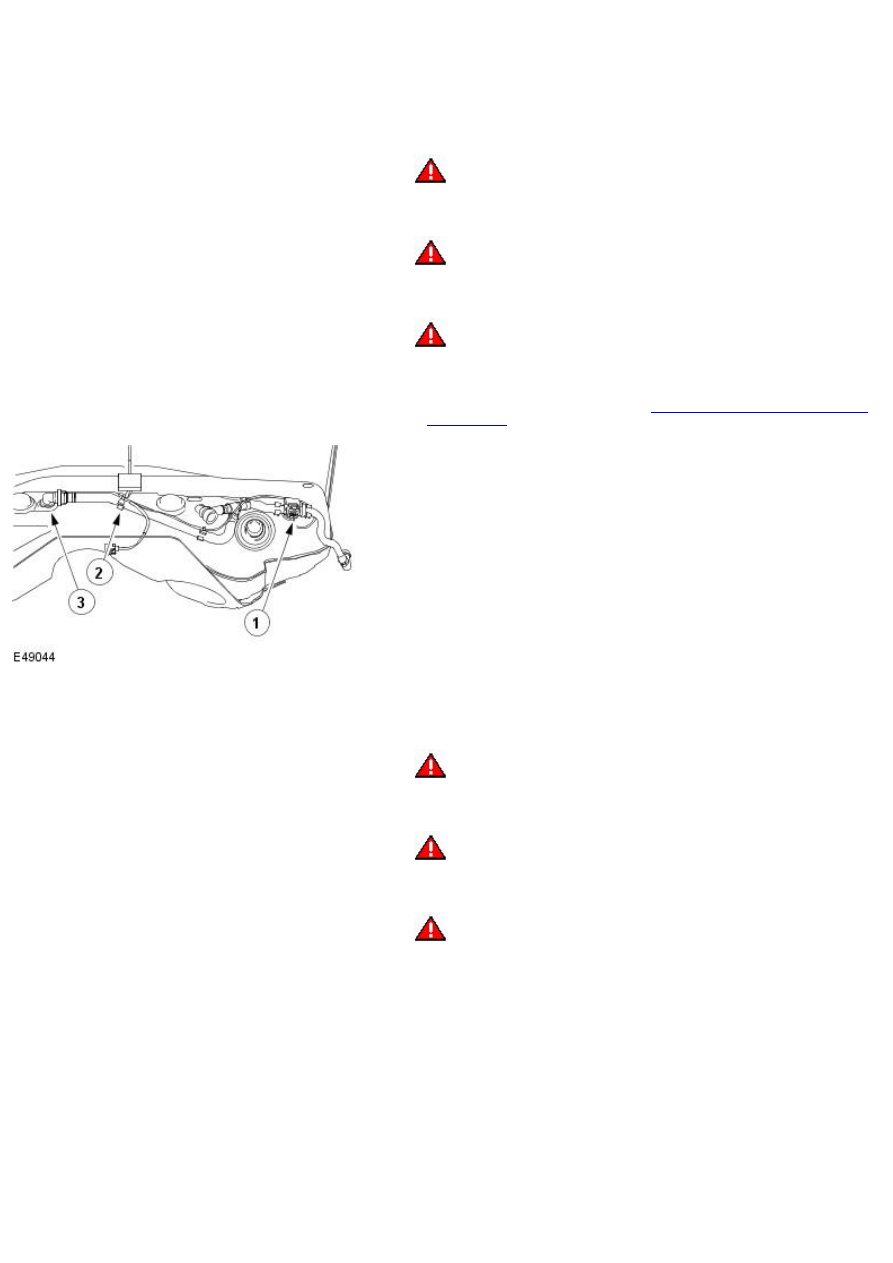Jaguar X-Type Sedan and Estate (Wagon). Manual - part 476

Published: 11-May-2011
Fuel Tank and Lines - Gas Fuel Tank Pressure Sensor
Removal and Installation
Removal
• NOTE: The fuel tank pressure sensor is fitted to federal market vehicles only.
1. WARNINGS:
Do not smoke or carry lighted tobacco or an open flame of any type
when working on or near any fuel related components. Highly flammable
vapors are always present and may ignite. Failure to follow these
instructions can result in personal injury.
Do not carry or operate cellular phones when working on or near any
fuel related components. Highly flammable vapors are always present and
may ignite. Failure to follow these instructions may result in personal
injury.
This procedure involves fuel handling. Be prepared for fuel spillage
at all times and always observe fuel handling precautions. Failure to follow
these instructions may result in personal injury.
Remove the fuel tank.
For additional information, refer to:
Fuel Tank - 2.5L NA V6 - AJV6/3.0L
NA V6 - AJ27
(310-01 Fuel Tank and Lines, Removal and Installation).
2. NOTE: The fuel tank pressure sensor is supplied as an assembly with
the evaporative emission hoses.
Remove the fuel tank pressure sensor assembly.
1. Disconnect the electrical connector.
2. Detach the wiring harness.
3. Remove the fuel tank pressure sensor assembly.
Installation
1. WARNINGS:
Do not smoke or carry lighted tobacco or open flame of any type
when working on or near any fuel related components. Highly flammable
vapors are always present and may ignite. Failure to follow these
instructions can result in personal injury.
Do not carry or operate cellular phones when working on or near any
fuel related components. Highly flammable vapors are always present and
may ignite. Failure to follow these instructions may result in personal
injury.
This procedure involves fuel handling. Be prepared for fuel spillage
at all times and always observe fuel handling precautions. Failure to follow
these instructions may result in personal injury.
To install, reverse the removal procedure.